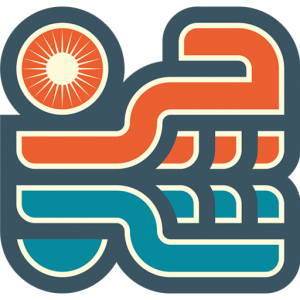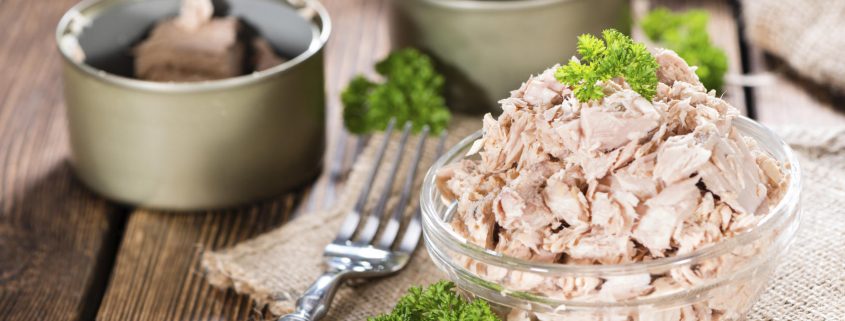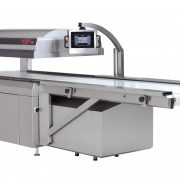Tuna fish
One of the popular products in food and beverage industry, is tuna fish. In this article of shabchare we will introduce you, tuna fish production line.
A brief description of the tuna fish
Tuna fish is a product of marine products that has attracted many families and consumers around the world due to its natural health and its many properties. The most commonly used method is tinned fish.
According to statistics, half of the tuna caught in the world is from the southern Pacific, accounting for 95 percent of its annual consumption in the United States, Taiwan, Japan and Korea. In this paper, we briefly describe the process of converting fresh fish into tuna, in the line of tuna fish production:
Different steps in the canned fish production line (tuna fish)
If you would like to know about the canned fish line, follow us in the article below.
The first step in the production line of canned fish) preparation
Step 1: Discharge the purchased fish
Step 2: Transfer the fish to the refrigerator
Step 3: Transfer fish from cold refrigerators to production line (as much as production capacity)
Step 4: Defrosting, this step is used for fish that are kept in the refrigerators and need to be defrosted to enter the production line. But in some cases fresh fish enter the next stage (wash) and do not need to defrost.
Step 5: Rinsing, this step is performed for medium and large fish, with water pressure and brush by manpower, but for small size fish, this action is done by the machine.
Step 6: Separation, this separation is done in three ways:
1) Separating the head: In this section, the head of fish is cut off by the cutter blade.
2) Abdominal depletion: Extra parts of the fish are separated from the abdomen by a device or by manpower.
3) Scaling: In this section, they put the fish on a conveyor belt and carry out scaling by moving it back on the surface of the ribbed surfaces.
Step 7: Washing the finished parts, due to the product’s corruption time, you need to minimize the interval between the washing stage and the canning stage.
The second step in the production line of canned fish) initial cooking
The initial cooking of fish has different types depending on the different factors:
- Cook under water vapor pressure
- Wet cook
- Cook in dry heat or hot air
- Cook in hot oil
The initial cooking process of the fish improves the consistency of the meat and facilitates the separation of the bone and facilitates its canning.
The use of hot air should also be carefully monitored so that the moisture content of the product is not excessive. In this case, the texture of these fish is dried and tightened and its qualities are reduced. Cooking with hot air (120 ° C), and infrared rays are recommended for large size fish.
The third step in the production line of canned fish) filling the product inside the can
At this stage, the prepared meat should be filled in cans, but the selection of cans is different according to the type of final product and the size of the fish ordered.
Cans must be washed before filling, as they may have accumulated in the cans like dust and particles in the air during storage.
After filling the cans with fish, you should add hot water or salt.
The fourth step in the production line of canned fish) to exhaust and pass through the exhaust tunnel
The cans should be airtight before capping.
To avoid this, it is essential to create a partial vacuum in the cans before the capping step. The development of a partial vacuum in the cans, in addition to reducing the possible damage to existing seams, also affects the subsequent identification of swollen canisters, since the two ends of the cans in which there is a slight vacuum at the end of the autoclave and the cooling of the canister is slightly concave and collapsed. For this reason, cans that are inflated and swollen at the end are easily detected and tested.
Minor vacuum can be created in the following ways:
- Filling the can with hot food and quick capping
- Filling the cans with cold food and heat it up to 95 – 80 ° C and quick capping
- Removing air inside the can with a vacuum pump and its capping
- Replacing the space above the cans with hot steam and its quick capping
At the end of the steps above, cans will quickly be capped cover wile exiting the evacuation tunnel, otherwise the cans will lose their empty space and the vacuum will not be created.
The fifth step in the production line of canned fish) Capping
The capping step is one of the steps to be taken with high supervision, because if the insert is insufficient, the canned fish produced will not be safe and usable. To allow the canister to be sealed, after passing through the exhaust tunnel and draining the air above the can with water vapor, it immediately presses the metal door on the body. This is done by a sealing device. Because the door and body are interconnected, the enclosing device completes the enclosure in two steps, which are as follows:
- Step 1: Make the bend between the body and the door of can
- Step 2: Compress this bend so that there are no openings between the two compact layers (the door and the body)
To ensure the sealing of the door and body of the can, the door closure is usually covered by a material called a mastic, which is a kind of varnish.
- Step 3: Washing the cans
The cans are passed through a washing machine. Hot water is sprayed on the cans with pressure on the device. Of course, in some canning factory, hot water ponds contain detergents. During this operation, the oil and other items sticking to the cans are separated and the cans prepared for the next step are prepared.
The sixth step in the production line of canned fish) Autoclave
Cans are placed in autoclave devices to cook fish until they soften the bones and deactivate all bacteria and enzymes.
The temperature and time required to deactivate bacteria is greater than the amount required to cook fish and deactivate enzymes. These causes are caused by steam pressure in the autoclave by heat.
The durability of the cans depends on the temperature, the pressure of the autoclave, and also on factors such as the size of cans, the acidity of the contents of the can, the amount of contamination and the chemical composition of the material in the can, as well as the shape of the cans and the duration of the stay in the exhaust tunnel.
The way the autoclave works is that the cans are placed in a special lattice after being sealed and washed and transferred to the autoclave by a crane. After the autoclave door is closed, hot water is injected into the machine by pressure. The air inside the autoclave is gradually evacuated and the pressure constantly increases.
The autoclave pressure is usually 10 till 20 pounds per square inch and the temperature is about 105 till 121 degrees Celsius, and the duration of the preserving can be varied from 50 to 65 minutes.
At the end of the time, the tap is adjusted to the steam inlet and the outlet valve returns to gradually decrease the temperature and pressure and reach the balance with the environment. Then open the cold water valve to bring the water into the oven cavity. As a result of a thermal shock, sterilization of cans can be completed. The autoclave may be horizontal or vertical, and the mode of operation is the same.
The seventh sixth step in the production line of canned fish) cooling and drying
Upon completion of the temperature process, it is necessary that the outer surface of the packages is well cleaned and immediately cooled down, because having a product containing them exposed to high temperatures for a longer period (without the necessity to do so) causes a devaluation food, reducing the quality of the product and the probability of sprouting and activating the remaining spores.
Eighth in the production line of canned fish) coding and labeling
After the end of the temperature process, it is necessary to encode one end of the can, the head or the floor, for this purpose, inkjet electronic systems (jet printers) should be used to avoid damage to the body and the lacquer, otherwise at that place, ringing will begin.
The last step in the production line of canned fish) quarantine warehouse
To ensure the sterilization of the cans in the autoclave stage, it is necessary for the cans to be stored before being labeled for 10 till 15 days in a specially insulated cabinet, so that at the end of the period, if the contamination is present in cans, its effects and symptoms are up to date. One of the symptoms is the presence of contamination in the cans, the swelling of the cans and the leakage of the contents through the seams and gaps.
Launching production line of canned fish
If you would like to start a tuna fish line, contact our colleagues in Shabchare food and beverage industry. Our experts at the Shabchare center are ready to provide the services you need.








Leave a Reply